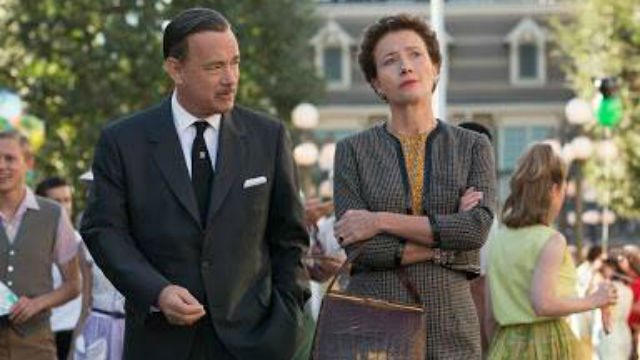SUMMARY
This is AI generated summarization, which may have errors. For context, always refer to the full article.

MANILA, Philippines – P.L. Travers, the author of the beloved novels about a magical nanny named Mary Poppins, is facing a dilemma. Strapped for cash and without anything new in the works, she is about to lose her house. Her only way out of the dire situation is to accede to the offer of Walt Disney to purchase the movie rights of her famous books. With a nudge from her hardworking agent, she flies to Los Angeles to agree to Disney’s proposal with the condition that she be allowed to have creative hand in the production.
Saving Mr. Banks, had it been about a fictional author working with a fictional Hollywood producer, could have been harmless, much like The Blindside (2009), The Rookie (2002), or any of Hancock’s previous cookie-cutter work. There is always a certain feel-good allure in any story about cantankerous middle-aged women who lose their icy exterior to kindness and good reason.
Hancock, moreover, has crafted the story into a handsomely produced spectacle with mid-century Hollywood dazzling with opulence and curious cheer. It’s nearly impossible not to swoon over such a film’s good-natured sheen.
However, Saving Mr. Banks does not tackle fictional people and their fictional relations. Travers and Disney are real people and their collaboration would in fact be remembered as one of Hollywood’s most difficult, with Disney famously telling her at one point, “Pamela, the ship has sailed.” Despite Disney’s requests, no sequel involving the studio was ever made.
That is as much as Travers’ later account would confirm, at least. According to John Lee Hancock’s Saving Mr. Banks however, everything seems dandy. Travers’ protests were nothing more than an opportunity for flashbacks into her hard early life. Her daily exercises with Disney and his crew of confectioners are but therapy for the misunderstanding author to dig inside herself to accept things she has no control over. The movie Mary Poppins is a celebration of that hard-earned acceptance, as may be observed at the image of Travers bawling at the memory of her father’s sacrifice, while the cast of the movie sings “Let’s Go Fly a Kite” with majestic gusto during the premiere of Mary Poppins.
That being said, Saving Mr. Banks has all the makings of a well-orchestrated ploy. From the casting of beloved Tom Hanks as the equally beloved Walt Disney, to Hancock’s treacly treatment of the material, to the portrayal of Travers as an uptight prude, everything is perfectly tailored to suit the interests of Disney’s corporation and its pertinent intellectual property.
Ploy or not, Saving Mr. Banks will still predictably melt hearts and earn its army of admirers. As mentioned, its dishonesty is disguised in pleasantry and its pandering to Hollywood’s power is draped in seamless craftsmanship.
Thankfully, Emma Thompson’s portrayal of Travers is nuanced enough to be of note. Hanks, on the other hand, gives Disney enough likeability to overshadow the dubiousness of the character’s endeavors.
In one particular scene, Disney visits Travers in her home to get the children’s book author to sign away the rights of her books in the guise of guiding her to closure of certain childhood pains. With Disney appearing the benevolent producer to the emotionally wrecked author, the scene exemplifies the point that the film wants us all to believe: that the world would be a better place if Mickey Mouse had his way.
As human beings thirsting for escape, we enjoy watching little mermaids marrying their princes instead of turning into seafoam, as well as other distortions of the themes, as long as they have the requisite happy ending. Saving Mr. Banks is no different. It is nothing more than a necessary exercise by Hollywood to use very personal histories of semi-famous people and perverting them into dainty and harmless pictures for its own motives. – Rappler.com

Francis Joseph Cruz litigates for a living and writes about cinema for fun. The first Filipino movie he saw in the theaters was Carlo J. Caparas’ ‘Tirad Pass.’ Since then, he’s been on a mission to find better memories with Philippine cinema.
Add a comment
How does this make you feel?
There are no comments yet. Add your comment to start the conversation.